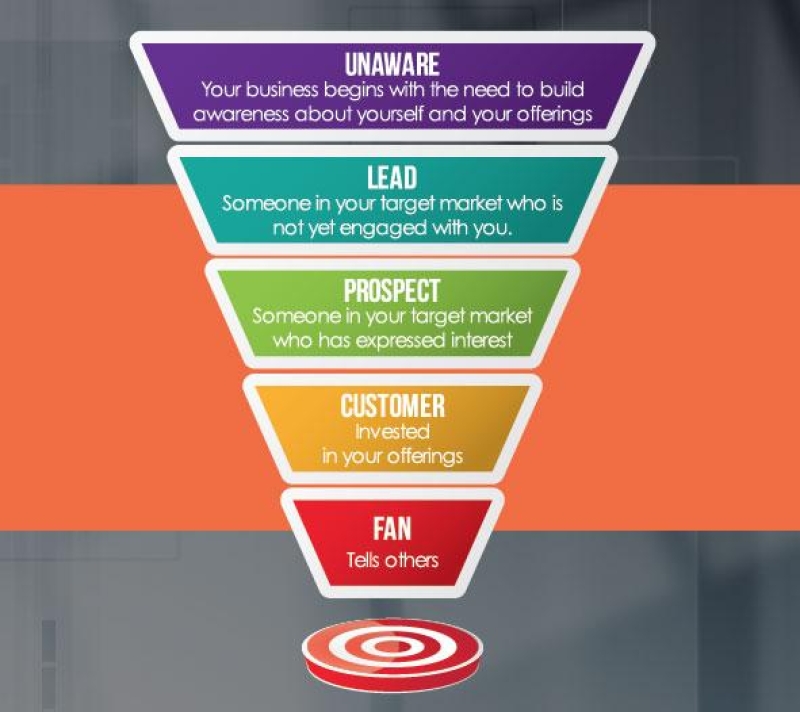
- Setting Your Goals
- Now for the Foundation
- The Building Blocks: The 5 Stages of a Sales Funnel
- The Unaware Stage: Is Anyone Out There?
- The Lead Stage: Don’t Bury the Lead!
- The Prospect Stage: Prospecting for Sales
- The Customer Stage: Customer Satisfaction
- The Fan Stage: I’m Your Biggest Fan!
- Funnel Flexibility
- How to Build a Killer Sales Funnel to Skyrocket Your Business
- Testing and Measuring
- Conclusion
In this post, you'll learn how to build a sales funnel that works for your business and all of the details that go into building it.
Some businesses look at sales funnels and marketing funnels as two separate entities. I personally think of them as one funnel, so I’ll be using both terms to describe them.
When it comes to sales funnels, Marketing generates traffic at the top and middle of the funnel. As the prospects get closer to a purchase, they are then transferred to the Sales Team. To facilitate this, communication is kept open between Marketing and Sales, and the goals and priorities of each department are harmonious.
A sales funnel is a marketing system with the ideal steps needed to sell your services or products. A prospect either goes on to the next stage of the funnel because they want to know more about your product, or they leave because they’ve lost interest.
This sales process is commonly called a funnel because the prospect is moved through a series of marketing channels to build awareness, trust, and engagement that closes the gap between being a lead and becoming a customer.
Already know what a sales funnel is? Find out how to build a sales funnel and make it more effective!
Every sale of a service or product begins with a certain number of prospective customers and ends with a smaller number that actually purchases a service or product. The idea is that you capture as many leads as possible and then narrow these candidates down in each stage of the funnel.
What type of candidates exists at each stage?
- People who become aware that your brand exists
- Those who decide to learn more about your organization and services
- Customers that purchase your product or service
- Satisfied customers who let others know about your product or service through word-of-mouth
- Customers who buy additional products or services from you instead of your competitors
Although the sales funnel can be a useful tool, it is important to remember that not all customers will go through every step of the process in order. Many qualified sales leads may skip over the first few steps.
Creating an effective sales funnel is like building a house—you start with a blueprint and a good foundation.
Setting Your Goals
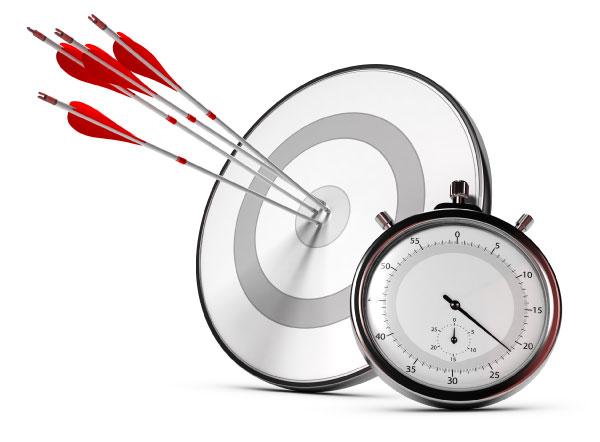
Before developing your marketing funnel, you need to come up with a specific goal that you want to accomplish with it. This is your blueprint. Goals like “getting more sales” or “making more money” are too broad. You need to narrow your topic. A goal like “Increase sales by 15% over last year” or “Have 1000 new leads by March 15” is better.
A marketing funnel with a defined goal also allows you to refine prospective customers into segmented groups as well as interact with those customers that have already made a purchase and are satisfied with your product or service.
Keep in mind that your sales funnel goal should take into consideration how your business operates. There are no one-size-fits-all goals! Remember, these goals aren’t stagnant, they will change as your business grows.
Much too often, a business will try to turn a lead or prospect into a sale as quickly as possible, turning off a potential customer. Using a sales funnel helps you turn leads into customers through a series of small conversions.
Now for the Foundation
The foundation of any good marketing funnel is a good Customer Relationship Management (CRM) application with marketing automation capabilities. The function of any good CRM is to help automate and simplify different processes in the funnel. It also provides a platform to organize customer data as well as keep track of your sales and marketing data.
When you choose a CRM application, ensure it is flexible enough for your business needs. At a minimum, CRM software should be able to automate most of the process for you by tagging your prospects based on what they are interested in, which then could trigger an action of a specific marketing campaign. This process is also known as marketing automation.
I would suggest checking out PULSE, it’s a great option with many more features than just sales and marketing automation.
If you are a Franchisor, then Pulse has features specifically developed for franchise systems. This has all of the same robust features as PULSE and it also has many other features for franchise management.
An effective CRM is one of the best investments a business can make! A CRM application is a necessary supplement to a sales funnel because it allows you and your team to keep track of different customers and their specific requirements. The automation features of a CRM mean that you can easily set up a campaign to respond immediately to an interested prospect.
A good CRM should also be able to run reports on all your different marketing channels and the different stages in your sales funnel. This way you can figure out what is working and what needs to be tweaked.
The Building Blocks: The 5 Stages of a Sales Funnel
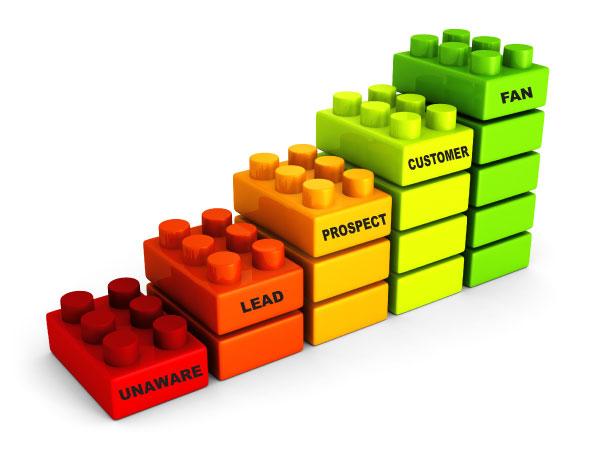
The sales funnel begins by capturing the attention of prospects and finding out which people are the best target for your product or service. The sales funnel continues to nurture buying customers, increasing customer satisfaction and offering loyal customers with special services or exclusive products. Although the structure can vary with the industry and need, a sales funnel usually consists of the following categories:
- Making people aware of your business and what you can offer them (Unaware)
- Finding those in your target market and educating them on your product or service (Lead)
- Engaging with those who have expressed interest. (Prospect)
- Converting prospects into purchasers. (Customers)
- Developing fans who tell others about your business and continue to buy your products (Fans)
The Unaware Stage: Is Anyone Out There?
The Unaware stage is usually, but not always, the first step of a marketing funnel. During this phase, you’re simply trying to make potential customers aware of your brand.
Building awareness can be done in several different ways. Some techniques you might want to consider are:
- Content Marketing
- SEO (Search Engine Optimization)
- PPC (Pay-Per-Click) advertising
- Retargeting
- Social media and/or email marketing.
- Blogging
- PR—print ads, radio advertising, billboards, direct mail
- Attending events—conferences, seminars or presentations—related to your industry or product. (Don’t forget the business cards!)
- Joining and participating in relevant Facebook or LinkedIn groups
When using these techniques, you should focus on adding value, not just promoting your products or sharing links to your website.
During this stage, you can start refining your target customers while telling them about how they can benefit from your products or services. This beginning step should be constantly tested and tweaked to find out what works best for your organization.
Want to know a great way to make your outreach effective? Give people something free if they provide their email address or other contact information. A good email list is very important for your business's success, and you should always be thinking of ways to get emails from your potential customers.
You’ve got the word out and are getting noticed. Now it’s time to move on to the Lead.
- New to CRMs and don’t know where to start?
- Stuck with a broken setup that someone else botched?
- Tried the DIY route but know it’s not working the way it should?
At PointsPeak, we help businesses:
- Choose the right CRM for their needs
- Clean up and rebuild messy, underperforming setups
- Fix automation issues that cost you leads and sales
- Build scalable, conversion-focused systems that grow with you
The Lead Stage: Don’t Bury the Lead!
The terms “lead” and “prospect” often get confused. A lead is someone in your targeted group who may or may not have heard of your company and has not made effort to engage with your organization. A prospect is someone who already has a relationship with your organization. Prospects know who you are and have shown interest in your product or service.
At this stage, you are speaking directly to the people you think your organization can help. This is when you want to supply them with content that helps them evaluate both you and your services. It’s important for your leads to be able to access information that will help them differentiate you from everyone else.
Don’t try to rush things by pushing for a sale during the lead stage. The lead stage is about developing trust and educating people. You want them to know why you are an expert in this field and are the best choice to solve their problem.
This can be done by targeting them with information we know they are interested in. For example, if I'm a car dealership, it wouldn't make sense to target someone with Audi ads if they were looking at a BMW on my site. I should target them with the exact BMW they were interested in.
Maybe, to convert a lead into a prospect, they just need more information on this particular BMW model—what type of gas mileage it gets, what safety features are available, or customer reviews.
These are all steps that go into the sales funnel. If this person visited my site and was browsing a specific model of a BMW, then I can retarget them while they are on Google or Facebook with specific advertising for this BMW.
If they click on the advertisement, I can have a call to action on that page to submit their email to request a test drive. Once you have their email, now you have a prospect and can move them further down the sales funnel.
Want to learn more about retargeting your leads and customers with specific ads? Download this how-to guide I created on retargeting here
The Prospect Stage: Prospecting for Sales
A Prospect is further along the sales process than a lead. They have taken action—such as signing up for an email list or following you on social media—that shows they have an interest in what your organization offers.
A lesser percentage of Leads turn into Prospects, and those Prospects can be reduced even further into people who are actually qualified to buy. What do I mean by qualified? A Prospect may love your product but not be the decision maker in their organization or they might not have the money to complete a purchase.
People often get “stuck” in the Prospects part of the sales funnel. This is where relationship building comes in. A well-thought-out sales funnel can increase your conversion rates substantially. Interact directly with people on social media. Comment on blog posts and attend industry events. Offer education and help, not just product pitches. Prospects will want different content while moving through the sales funnel, so don’t send them the same type of emails you are sending your leads.
The Customer Stage: Customer Satisfaction
Congratulations! Your prospect has turned into a customer. This is where everyone who has a service to offer or a product to sell would like to be, but only a limited number of people who are interested in that service or product will become a customer.
Repeatedly give customers reminders and the opportunity to purchase your service or products. Email them with information about your newest products or sales specials. Remind customers of upcoming holidays or important dates related to your product or services.
At this stage, it’s a good time to introduce upsells to your products or service. Create an offer—an extended warranty or a discount on their next purchase—that will deliver even more benefits to your customer if they upgrade. This strategy is known as an upsell.
Don’t abandon your customer just because they have purchased something! Remember that it is always easier to retain a current customer than trying to attract a new one.
At this point, you need to focus on retention—turning a one-time buyer into a repeat customer and, better yet, a Fan.
The Fan Stage: I’m Your Biggest Fan!
Many businesses think that once the person has purchased their product or service, they can now return to hunting for more leads. Don’t make this mistake! Don’t think that the sales process is finished because your service or product has been purchased. Once you have these types of customers, work to keep them.
If I was forced to choose between new leads or Fans, I already have—current customers would win every time. Why? Customers who receive personal attention and easy access to product support will feel that they made the right choice. Your existing customers have already purchased from you, they trust you, and they are a reliable source of revenue.
Even if they don’t purchase anything from you again, Fans will recommend you to business associates, friends, family, and others. These people are your evangelists, they are the ones that leave glowing reviews about your organization and the services or products you offer.
Sometimes even your fans need a little nudge. Encourage existing customers by giving them a discount on their next purchase if they refer someone who becomes a customer. Resell existing customers the latest version of a product they have already purchased.
Part of your sales funnel in this stage should be a comprehensive referral program that encourages your existing customers to refer others to your business.
This group is important because they can affect the structure of your sales funnel. Survey these customers and get their feedback. Once you have enough information—usually 1000 or more responses—find common trends and tweak your sales funnel accordingly.
Funnel Flexibility
You aren’t limited to using your funnel for signups and/or purchases. You can use funnels in different areas of your website to see how visitors move through a particular website flow. These funnels can be used to track things like email newsletter signups, page conversions, and shopping cart abandonment.
Once you have this information, you can optimize your funnel even more, converting prospects into customers.
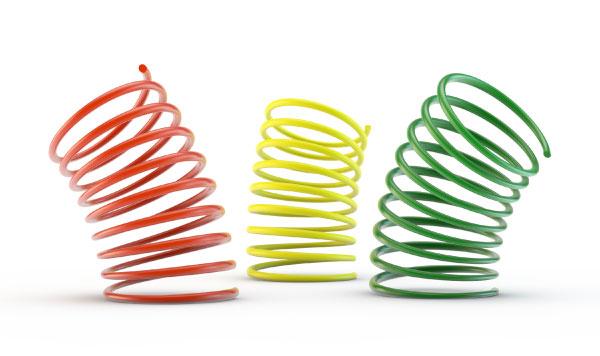
How to Build a Killer Sales Funnel to Skyrocket Your Business
Now that you know how a sales funnel works—as well as its different stages—let’s dive into actionable steps of the funnel-building process. I’ll break this down by each of the five stages to make it easier to digest.
Before you start building your funnel, you will need a plan. I like using mind mapping software to get a “helicopter” view of what it will look like and then drill down to the steps needed to execute your plan.
I like using mindmeister.com for my mind maps; it’s a relatively inexpensive option for mind mapping software.
Below is an example of a mind map:
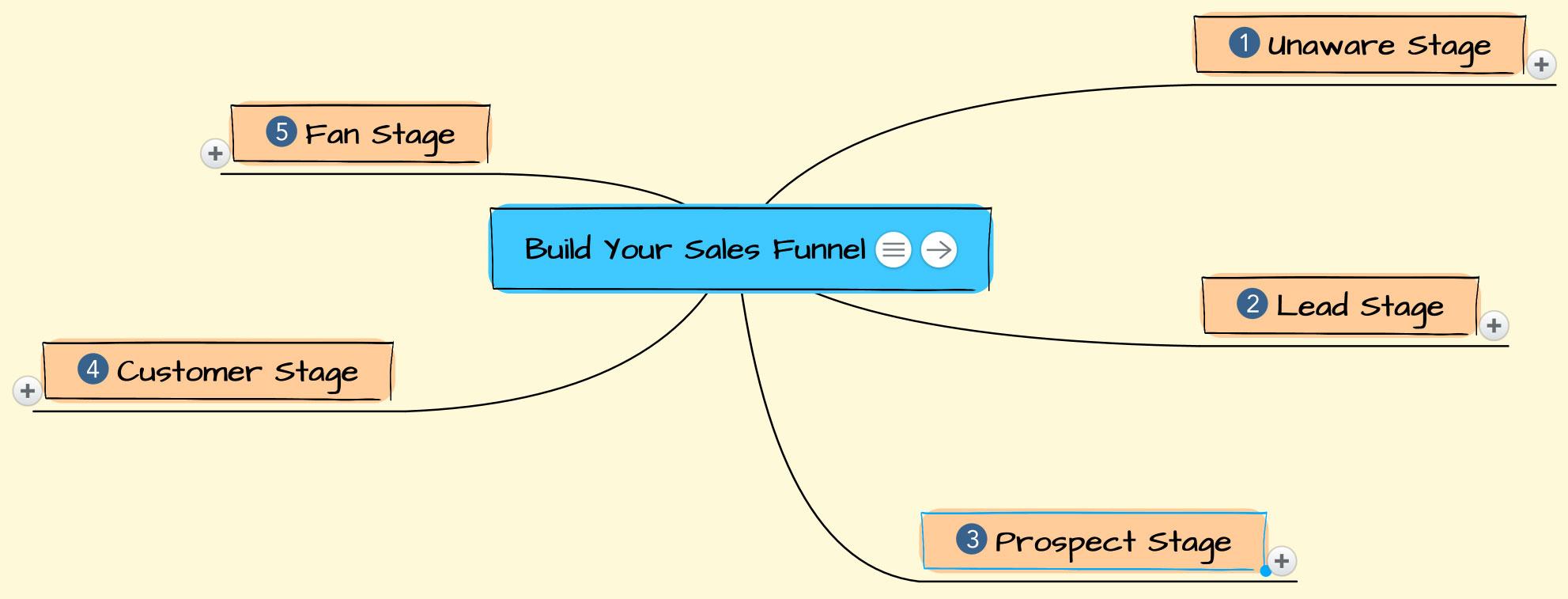
Here’s an expanded view of the template created by Aaron Hoos.
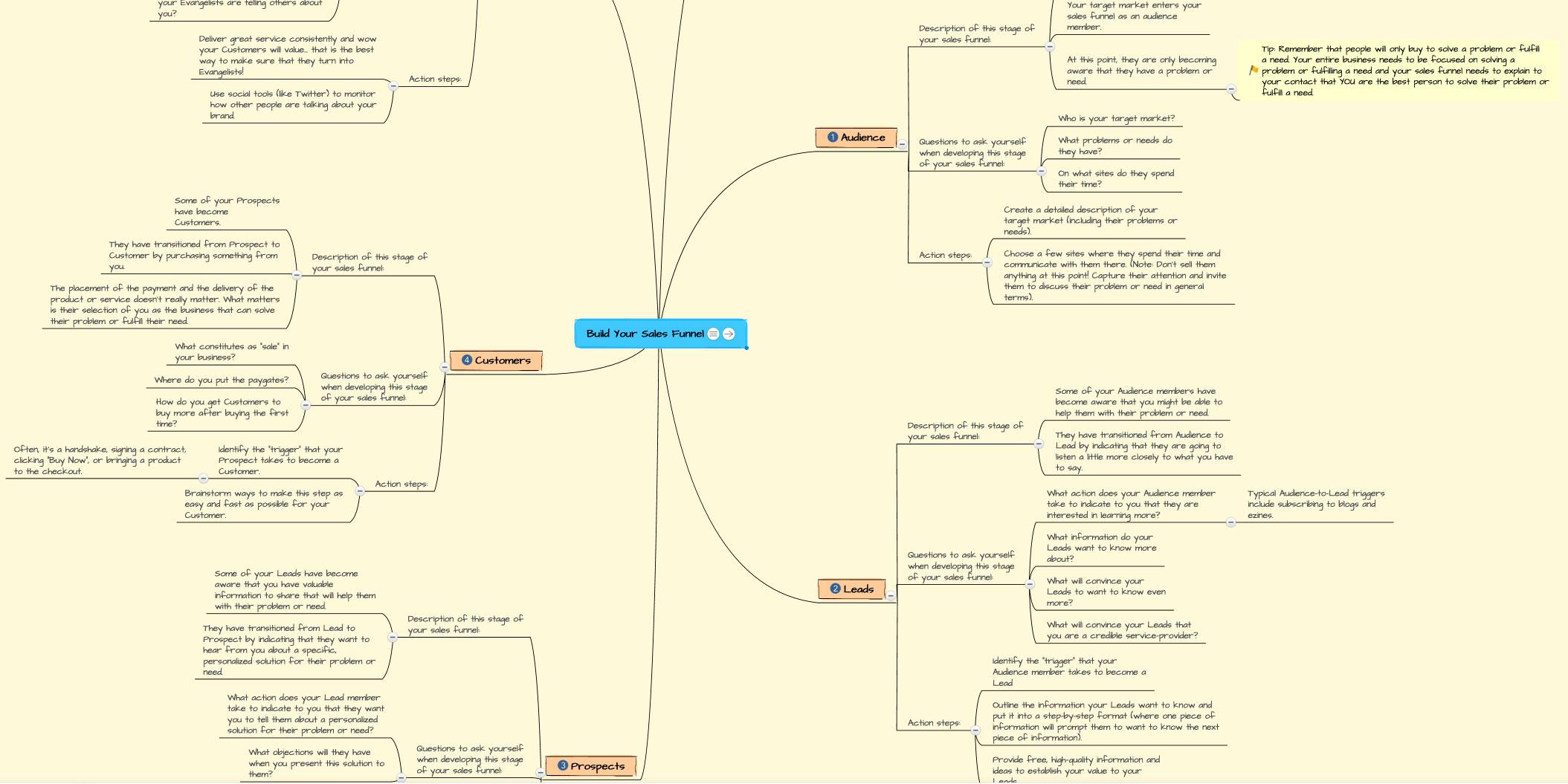
For each stage, you must ask yourself how the customers will enter the stage, and how they might exit it. If they purchase a product in stage 2, then they’re going to skip stage 3 and go directly into stage 4. They might be in stage 2 and complete an action that triggers them to move into a different sequence in stage 2.
I will go into this further as we move through the stages.
Once you have your sales funnel mapped out, you can start drilling into the details and laying out the actionable items.
Stage 1: Unaware
I’m going to use a car dealership to show the details of each stage since I previously gave an example of retargeting potential customers that might be interested in purchasing a BMW.
If I own a car dealership and I’m trying to build awareness of the business and find prospective buyers, I need to start thinking of marketing strategies.
I’ll start by brainstorming marketing channels that can be used. I picked a few strategies that I think could work well for building awareness of my dealership.
- Paid Advertising (PPC) – Before I launch my paid advertising campaigns, I will want to identify my target market and build buyer personas. (I will cover building buyer personas in a future article.) Identifying your target market is important so you can maximize your ad spending by targeting the demographics that are most likely to buy your product.
- Content Marketing – Creating content that educates my customers on any objections they may have, new vehicles coming out, new technology, etc. I can use this content to help with my SEO, paid advertising, email marketing, guest blog posts, and more.
- Search Engine Optimization (SEO) – Using this strategy will allow me to optimize my website and gain traffic from organic search rankings.
- Email Marketing – With every strategy that I’ve outlined, I have a lead capture goal that will attain a customer email address. After this, I can move customers through different stages of my funnel by emailing them helpful information that educates them and answers any objections they may have.
- Remarketing – If someone visits my website, I will remarket to them with ads relevant to the pages they visited on my site (See my example of this here). I will retarget them with different ads as they come back to the site and visit different pages. I want to keep my ads fresh and relevant to their interests.
I don’t want to focus on too many strategies at the beginning so that I can fine-tune my current strategies and max out these marketing channels first. Using a shotgun approach will spread yourself too thin, and you won’t be able to efficiently measure what’s working and what’s not.
I really like the traction model detailed in the book Traction: How Any Startup Can Achieve Explosive Customer Growth by Gabriel Weinberg and Justin Mares. The book focuses on a 3-step framework and gives examples of the different 20 traction channels and how to take advantage of them. I highly suggest checking it out!
Stage 2: Lead
In the lead stage, I want to identify what my prospective customer is interested in and move them through the right sequences to educate them and build trust. I will automate this process as much as possible by using a CRM and an Email Marketing system.
if you are looking for a robust CRM application to handle this, I mentioned a couple of options above that would work well for you.
Here are some examples of how I will handle leads that come in through lead generation forms on my website. I’ve broken these examples down based on the marketing channels outlined above.
- Joe Smith enters my site from my current Tesla advertisement. He likes what he sees and fills out the lead generation for more information.
- He is automatically added to my CRM and is assigned a few tags: Tesla, Electric Car, and Model S.
- These tags will help us automate what sequences Joe will be added to and what information he will receive.
- Joe is now moved into a sequence that starts a series of emails that educates him on The Tesla Model S car and answers any objections he might have.
- The lead capture form also got Joe’s phone number which triggered a workflow sequence for one of my sales reps to follow up with him by phone.
- The sales rep gives Joe a call and leaves a voicemail. Joe doesn’t call back.
- When I mapped out my sales funnel for this sequence, I considered the possibility that a lead might not convert to a prospect because the Tesla S price point is too high. I planned for this possibility by sending emails featuring lower-priced Tesla models if there was no response after five emails.
- At this point, Joe has had a sales call from my sales rep, received five emails, and still has not responded to the invitation to come in for a test drive.
- On his sixth email, Joe opens it and clicks a link for the Tesla Model 3, which is less expensive. He is now tagged with the Model 3 tag. This stops the Tesla 5 email sequence and moves him into a new sequence of emails educating him on the Tesla Model 3.
- After his second email in this sequence, Joe requests a test drive. This now moves him into Stage 3 – The Prospect Stage.
Stage 3: Prospect
Joe is now in the prospect stage and came into our dealership for a test drive. Joe fills out further information so that he can test drive the car.
- Joe is 35 years old, married, and has an income of $150,000 per year. This information is now added to our CRM system so that we can use it to help fine-tune our buyer personas as we collect more data.
- Joe loves the car after test-driving it but says he must discuss purchasing the car with his wife before he can make a final decision.
- Joe states that if he and his wife decide to purchase the car, it will be within the next week.
- My sales rep adds this information to the CRM system and sets a reminder to follow up with Joe in a week if we don’t hear back from him.
- In the meantime, Joe is still receiving emails educating him on the Tesla Model 3.
- A week later, we still haven’t heard from Joe. The CRM system generates a reminder to my sales rep to make a follow-up call.
- Joe answers the phone and says he and his wife will be coming in later that day to purchase the car.
You see how powerful this is? We just took a person and moved them through a series of events to educate them, build trust, and act in a prompt and professional manner. We can easily do this because we have systems in place to automate certain aspects of the process as well as reminders to alert us of any manual tasks that need to be done.
This is a simplified example; you could have multiple sequences in each stage with different actions set up for each sequence.
I suggest starting with only a few sequences per stage so you can closely manage and monitor them. The more sequences you have in each stage, the more complex the entire funnel, and the harder it is to manage. Once you get comfortable with the process and see results, you can add more sequences as your company grows.
Stage 4: Customer
Joe is now our customer and is moved into several sequences for this stage.
- A Maintenance Sequence that will send him reminders when his car is due for maintenance. Each time that he brings his car in for maintenance we have another sale.
- A New Car Sequence will send him emails every year on the new Tesla models, as well as encourage him to come in for a test drive.
- A Feedback Sequence sends him an email requesting information on his experience that also asks if he would refer friends or family to us.
- Joe responds to this feedback email with positive comments, which are automatically posted on our site.
- The email also encouraged Joe to share his feedback on Google. This will help boost our local search rankings.
- Joe responds to this feedback email with positive comments, which are automatically posted on our site.
- Based on Joe’s feedback we believe that he is a loyal fan. He’s moved into Stage 5
Stage 5: A Loyal Fan
This is the most rewarding stage because we have our customers referring us to business associates, friends, and family. There is nothing better than a warm lead from a customer!
After Joe is moved to this stage we placed him into our Referral Program Sequence which contains a series of emails with incentives for giving us referrals that lead to closed sales.
Stages 4 and 5 will continue for the lifetime of the customer unless they decide to opt-out of our marketing.
Testing and Measuring
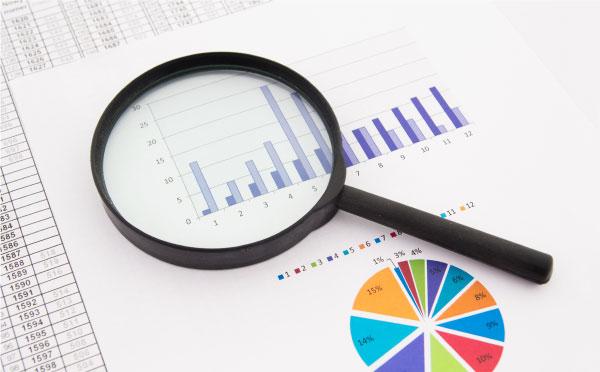
You should track your Key Performance Indicators (KPI) in every stage, run regular reports, track your conversion rates for every stage, and always brainstorm ways you can make improvements.
You can have many different sequences in every stage, so it’s important to start small and take manageable steps. If you don’t have time to analyze your numbers, then you have too many things going on and should scale back.
You can easily get bogged down analyzing too much data. I suggest monitoring one to three key metrics. Pick a couple of metrics to track that you think will make the biggest impact on your marketing efforts, and make sure those are performing to their maximum potential.
You’ll never know what’s working without tracking your KPIs and knowing your numbers!
If you’re thinking, “There’s probably a better way to do this…” — you’re probably right.
Conclusion
It’s important to remember that marketing and sales funnels are dynamic. Don’t just put a funnel in place and expect it to do all the work for you! You need to constantly be gathering new data and improving your marketing and sales funnels to get better results. Although your funnels can be work, it will all be worth it when you start turning your prospects into fans and you have a well-oiled machine working for you.
Always think from your customer’s point of view. What would they want? What can I do to blow their socks off and make them a loyal fan? Thinking from your customer’s perspective and consistently seeking feedback will help create the business you’ve always dreamed of, and word-of-mouth referrals will spread like wildfire!
Isn’t it time you start creating high-performing marketing and sales funnels?
